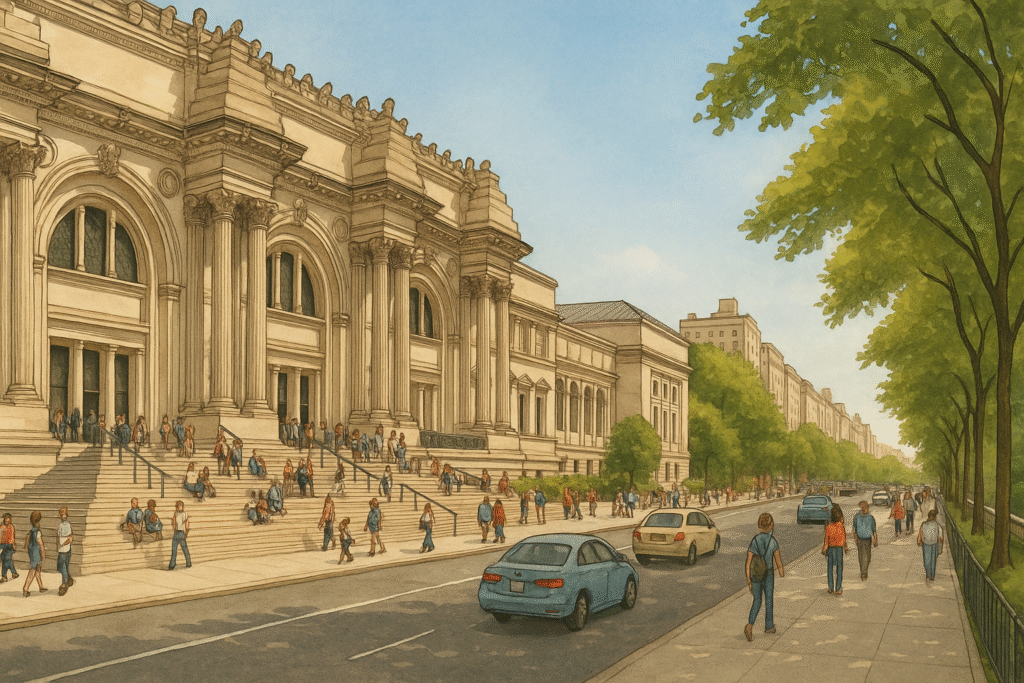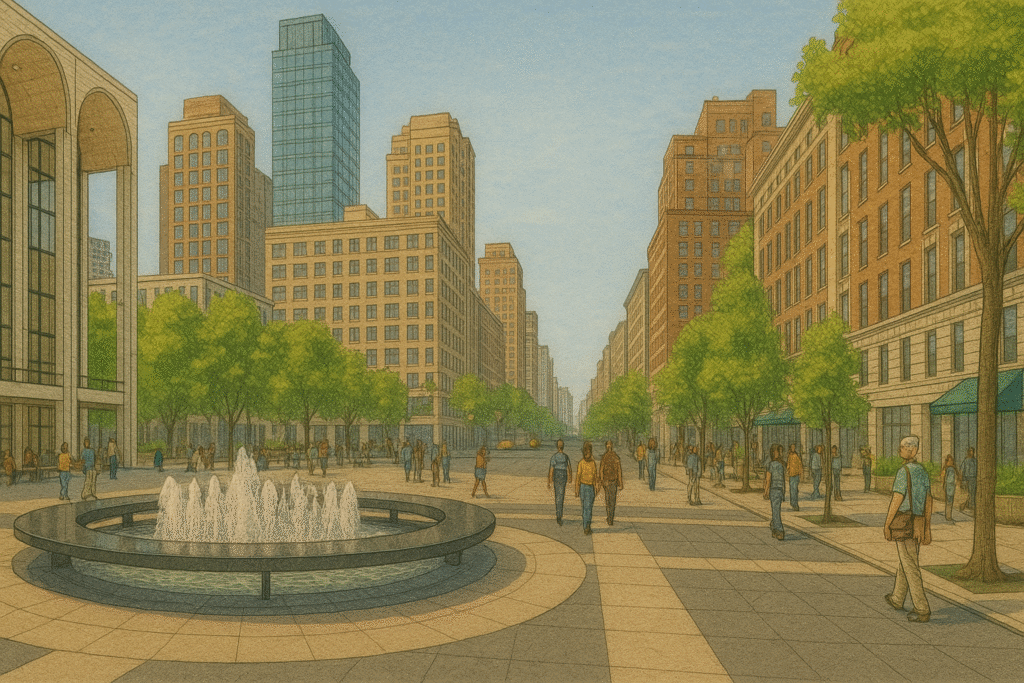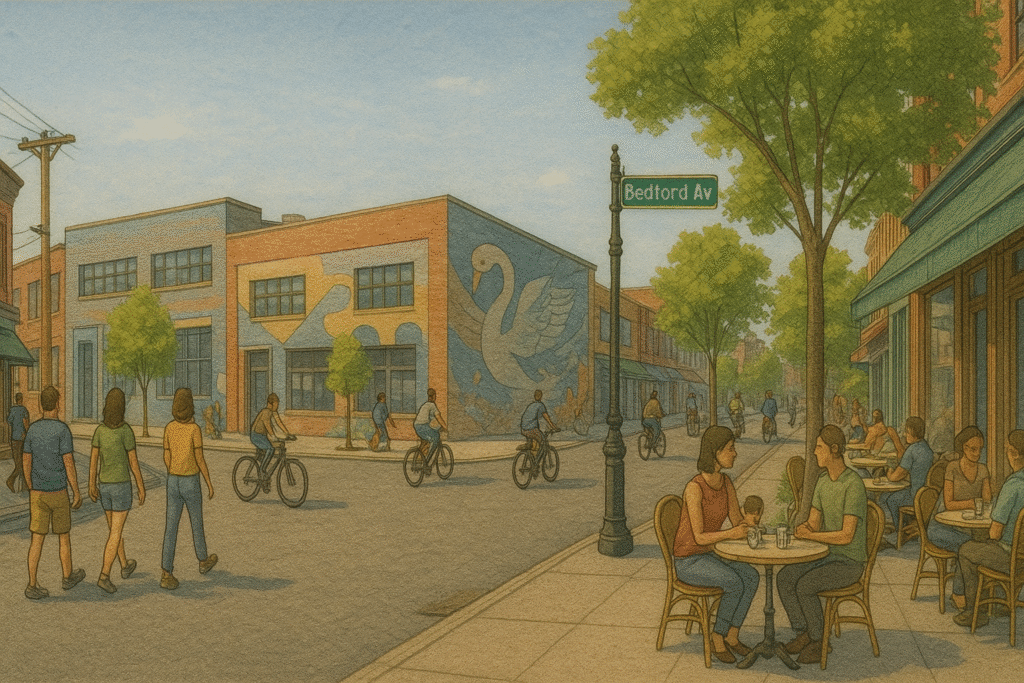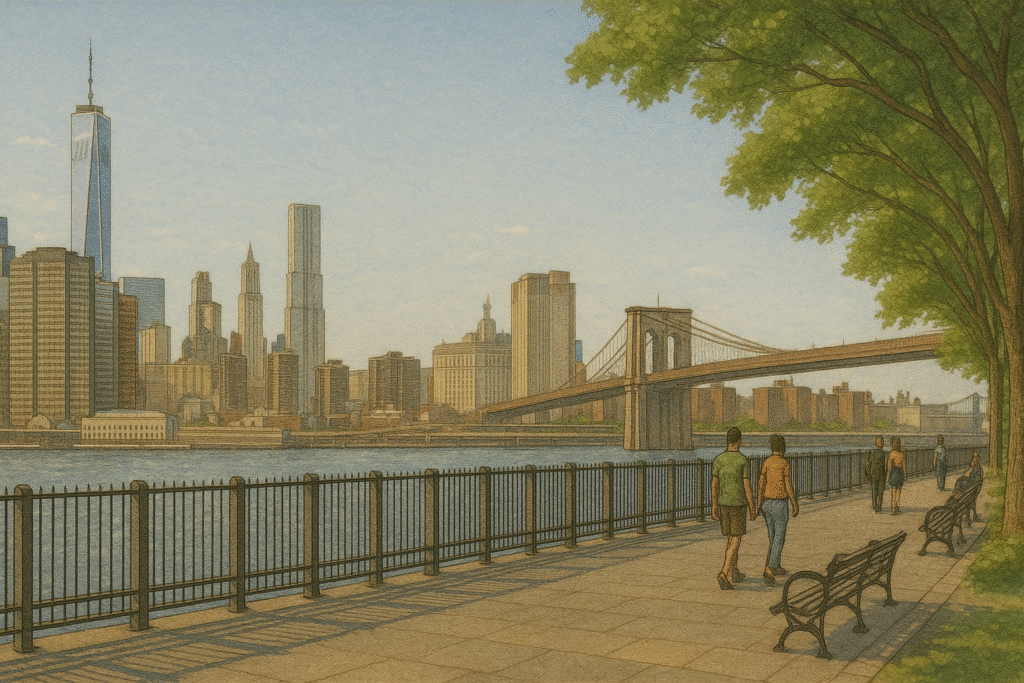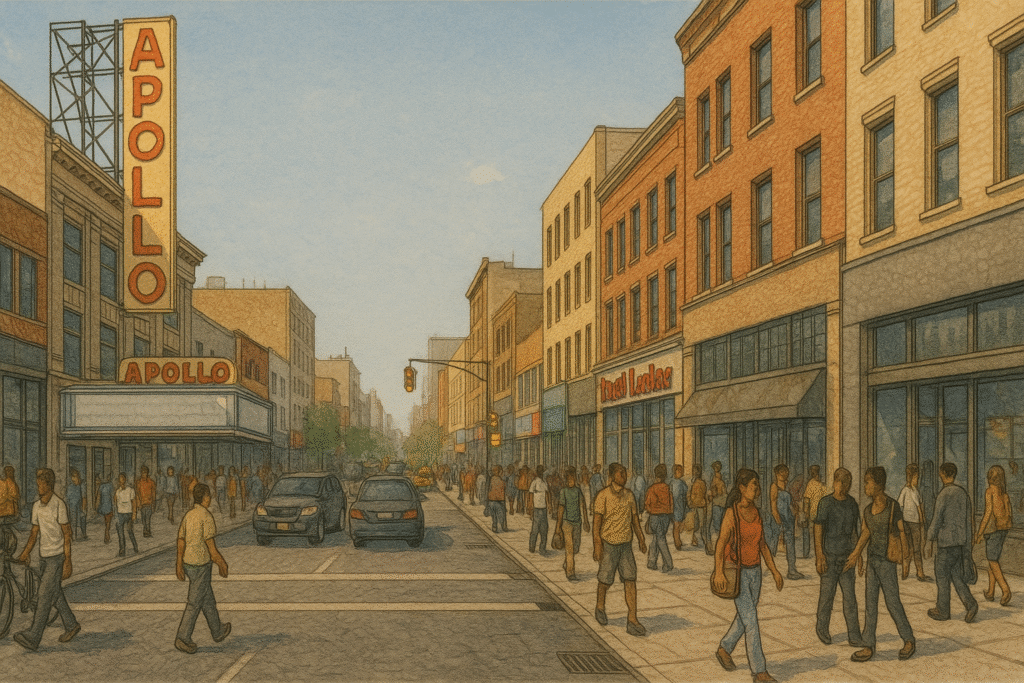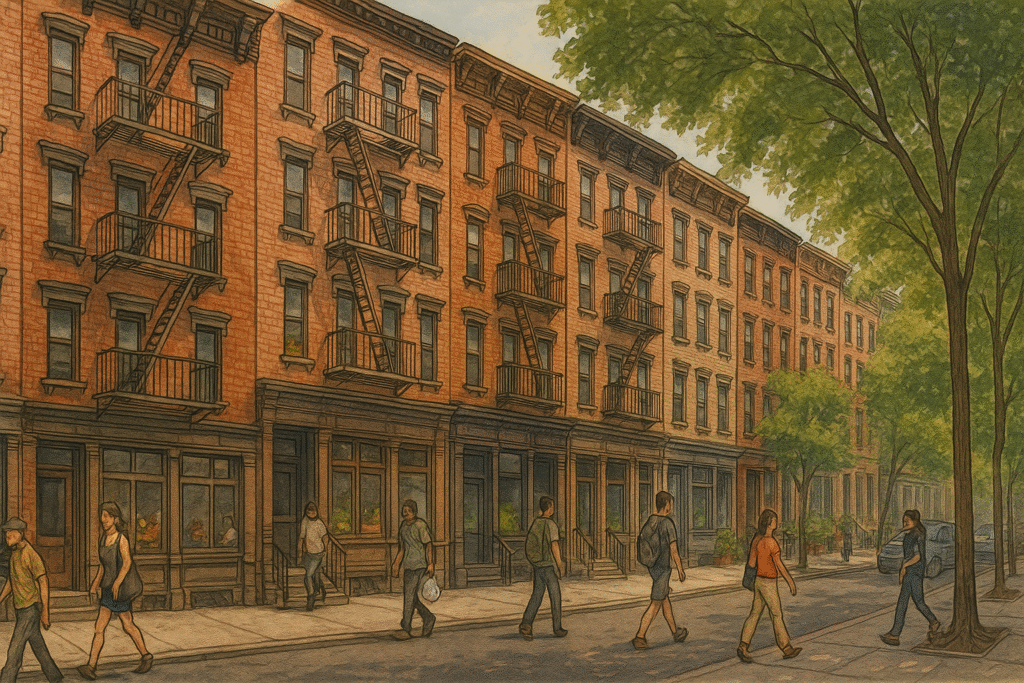This walk through the Upper West Side follows a route from Lincoln Center to Columbia University, highlighting the neighborhood’s mix of cultural venues, historic architecture, and parkland. The path begins at a major performing arts complex, moves along Broadway past shops and residential buildings, and continues toward both Central Park and Riverside Park. Visitors will see landmark apartment houses, museums, and landscaped public spaces. The pace is moderate, with opportunities to pause at plazas, enter park paths, or explore side streets. This itinerary is suited to travelers interested in the combination of arts, architecture, and open space in a residential Manhattan setting.
Lincoln Center to Broadway
Begin at Lincoln Center for the Performing Arts, a complex of theaters, concert halls, and outdoor spaces located between West 62nd and West 65th Streets. The central plaza features a large circular fountain surrounded by the Metropolitan Opera House, David Geffen Hall, and the David H. Koch Theater. The open design allows views into glass-fronted lobbies from the plaza.
From Lincoln Center, walk north along Broadway. The avenue is lined with a mix of prewar apartment houses, modern residential towers, cafés, and retail stores. Sidewalks are wide, and cross streets provide glimpses east toward Central Park and west toward Riverside Park. Street trees and occasional planters soften the edges of the busy thoroughfare.
Continue to West 72nd Street, passing neighborhood staples such as bakeries, small grocers, and bookstores. This section of Broadway combines local businesses with national retailers, and foot traffic remains steady throughout the day.
West 72nd Street and Central Park West
From Broadway, turn east onto West 72nd Street, a wide, tree-lined block with a mix of historic apartment houses and ground-floor shops. The street leads directly to Central Park West, where notable residential buildings face the park.
At the northwest corner of West 72nd Street and Central Park West stands The Dakota, a late-19th-century apartment building with a distinctive gabled roofline, corner turrets, and an arched entryway. Its ornate façade is visible from the sidewalk, and its location opposite the park makes it a well-known neighborhood landmark.
Across Central Park West, enter the park through the Strawberry Fields entrance. This landscaped memorial area honors John Lennon and includes the circular “Imagine” mosaic. Paved paths here connect to nearby benches and shaded lawns. Visitors can continue a short distance deeper into the park to reach Bethesda Terrace, a formal gathering space with stone steps, arcades, and a central fountain.
After exploring the park, return to Central Park West and walk north along the avenue. The blocks here are lined with early 20th-century apartment houses and cultural institutions, including the American Museum of Natural History with its formal entrance plaza.
Riverside Park and Columbia University
From the American Museum of Natural History, head west along West 81st Street to reach Riverside Park. This narrow, landscaped park stretches along the Hudson River and features walking and cycling paths, gardens, and open lawns. The elevated parkland provides partial river views between mature trees, and benches are placed along the paths for rest stops.
Walk north through the park to Riverside Church near 120th Street. This Gothic-style church has a tall bell tower that is visible from many blocks away. Its location near the park makes it a prominent architectural feature on the upper section of the route.
Continue north to Columbia University, entering the campus at Broadway and West 116th Street. The main entrance opens onto College Walk, a broad pedestrian path lined with lampposts and green spaces. Surrounding it are Beaux-Arts academic buildings, including Low Memorial Library with its dome and broad staircase. Public areas of the campus are open during the day, and visitors can walk through to see the central lawns and plazas.
This walk through the Upper West Side combines cultural landmarks, residential architecture, and green spaces into a single route. Lincoln Center, Central Park West, Riverside Park, and Columbia University each represent different aspects of the neighborhood’s character. Along the way, visitors encounter historic apartment buildings, major museums, and two of Manhattan’s most significant parks. For those interested in the intersection of urban life and public space, this route offers a clear view of how architecture, culture, and recreation coexist in a dense residential district.

The Street Sign
The Street Sign points the way to where things are — the parks, restaurants, museums, and everything else. These guides are built to save you time and energy. Need a plan for an NYC outing? Follow The Street Sign.

